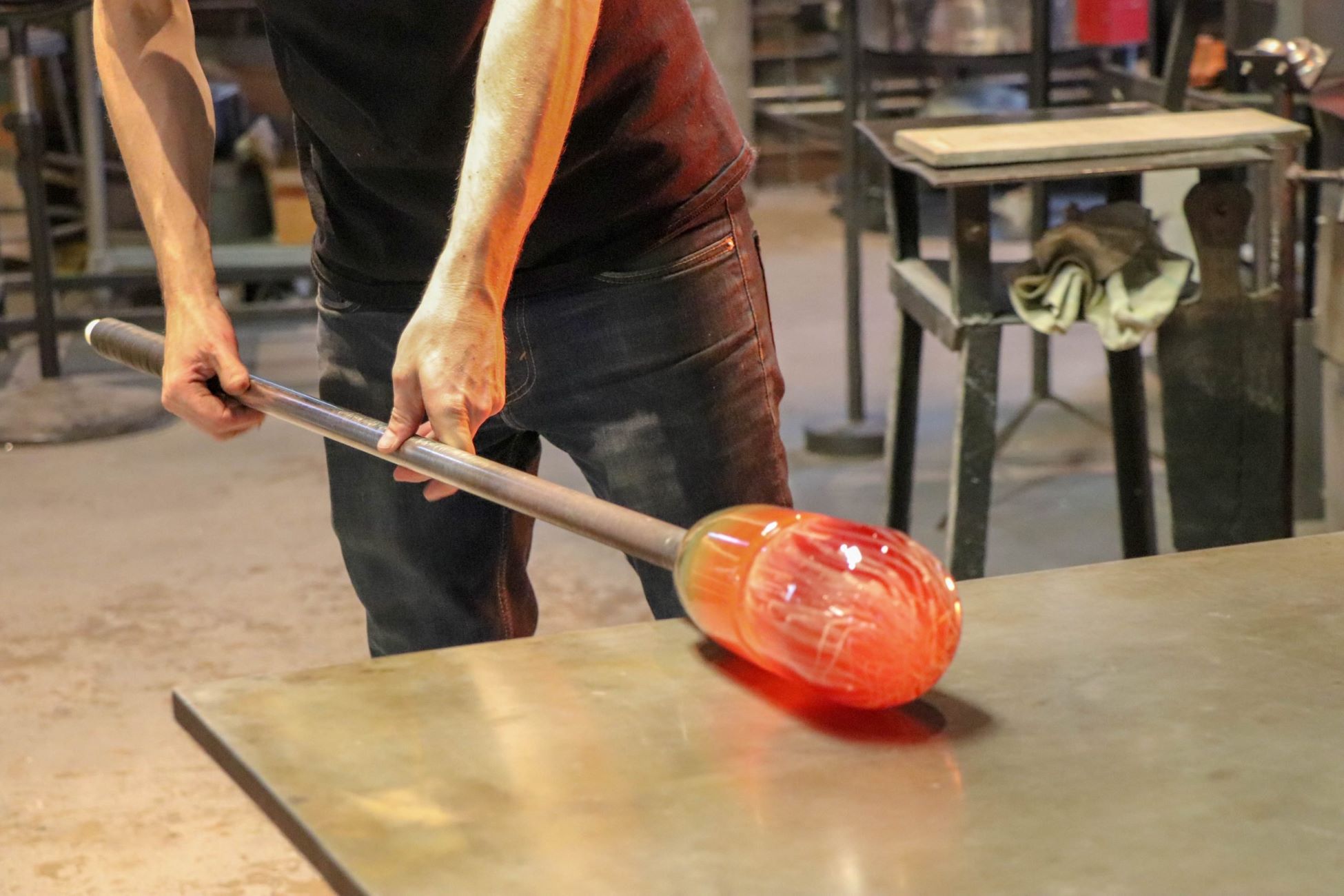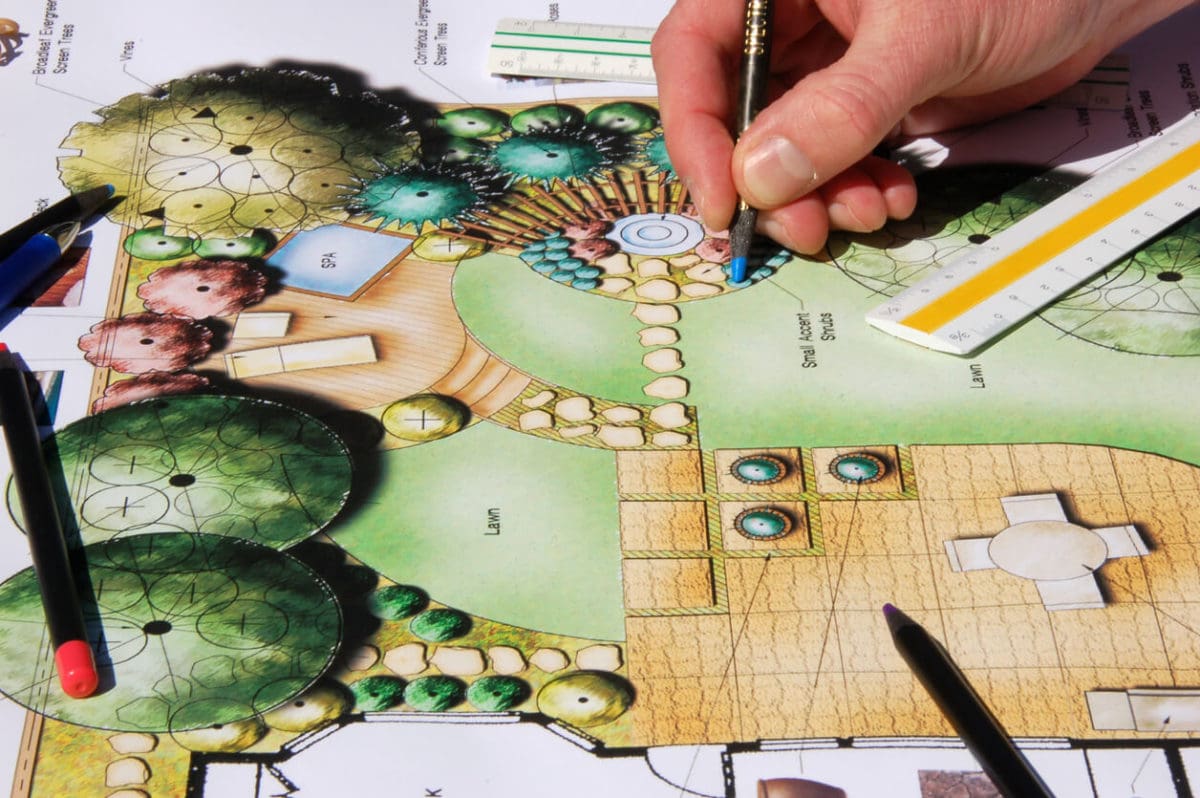Home>Furniture & Design>Interior Design Trends>How Does Sand Become Glass


Interior Design Trends
How Does Sand Become Glass
Modified: March 2, 2024
Discover the fascinating process of transforming sand into glass and explore its impact on interior design trends. Learn how this ancient art form continues to inspire modern decor.
(Many of the links in this article redirect to a specific reviewed product. Your purchase of these products through affiliate links helps to generate commission for Storables.com, at no extra cost. Learn more)
Introduction
Glass is a remarkable material that has been an integral part of human civilization for centuries. From the windows that let light into our homes to the intricate glassware that adorns our tables, this versatile substance is all around us. But have you ever wondered how something as ordinary as sand can be transformed into the transparent, durable material we know as glass?
The process of turning sand into glass is a fascinating journey that involves a delicate balance of art and science. It begins with the most abundant material on Earth—sand. When heated to high temperatures, sand undergoes a remarkable transformation, emerging as a substance that is both beautiful and functional.
In this article, we will delve into the intricate process of making glass from sand, exploring the pivotal role of heat and pressure in this transformation. We will also examine the different types of glass that can be produced from sand and the diverse applications of glass across various industries. By the end of this exploration, you will gain a deeper appreciation for the artistry and ingenuity involved in the creation of this ubiquitous yet extraordinary material.
Key Takeaways:
- Sand is transformed into glass through intense heat and pressure, creating diverse types of glass for everyday items, scientific equipment, and artistic expression.
- Glass, derived from sand, plays a vital role in architecture, automotive technology, healthcare, consumer goods, and art, showcasing its enduring significance in advancing human progress.
Read more: How Does Sand Turn Into Glass
The Process of Making Glass from Sand
The process of transforming sand into glass is a captivating alchemy that has been refined over centuries. It all begins with the primary ingredient: sand. This seemingly ordinary substance is predominantly composed of silica, which is the primary component of glass. To initiate the transformation, the sand is combined with other key ingredients such as soda ash and limestone. This mixture is then subjected to intense heat in a furnace, typically reaching temperatures exceeding 1700°C.
As the temperature soars, the grains of sand gradually melt and fuse together, forming a molten liquid. This molten glass is then carefully shaped and molded into the desired form. The shaping process can vary depending on the intended use of the glass, whether it be for windows, bottles, or intricate art pieces. Once the glass has been shaped, it undergoes a meticulous cooling process to ensure its structural integrity.
The cooling process is a critical stage in the creation of glass, as it determines the material's strength and transparency. Rapid cooling can result in a stronger, more resilient glass, while slower cooling can produce a more delicate, translucent finish. This delicate balance between heating and cooling is a testament to the artistry and precision involved in the glassmaking process.
Furthermore, the quality and characteristics of the final glass product are influenced by the specific composition of the raw materials and the precise control of the heating and cooling processes. These factors contribute to the diverse range of glass types available, each with its own unique properties and applications.
In essence, the process of making glass from sand is a harmonious blend of scientific principles and artistic finesse. It showcases the remarkable transformation of a commonplace material into a substance that is both functional and aesthetically pleasing. This intricate process underscores the ingenuity and craftsmanship that have been honed over generations, resulting in the diverse array of glass products that enrich our daily lives.
The Role of Heat and Pressure
The pivotal role of heat and pressure in the transformation of sand into glass cannot be overstated. These fundamental forces are the driving factors behind the metamorphosis of raw materials into a substance that is both durable and visually striking.
Heat serves as the catalyst for the entire process, initiating the fusion of sand and other components at incredibly high temperatures. When the raw materials are subjected to intense heat within the confines of a furnace, the silica in the sand begins to soften and eventually liquefy. This molten state is essential for shaping the glass into its desired form, whether it be a sleek window pane or an intricately crafted art piece. The controlled application of heat is crucial in ensuring that the glass achieves the desired level of transparency and structural integrity.
In tandem with heat, pressure plays a complementary role in the glassmaking process. The application of pressure helps to mold the molten glass into specific shapes and forms, allowing for the creation of a diverse range of glass products. Whether it's the gentle shaping of a delicate vase or the precision molding of a laboratory flask, the strategic application of pressure is essential in achieving the desired aesthetic and functional attributes of the glass.
Moreover, the careful manipulation of heat and pressure during the cooling phase is instrumental in determining the final characteristics of the glass. The rate of cooling can significantly impact the strength, clarity, and internal structure of the glass, ultimately influencing its suitability for various applications.
The harmonious interplay of heat and pressure in the glassmaking process exemplifies the delicate balance between artistry and scientific precision. It underscores the meticulous craftsmanship and expertise required to harness these elemental forces and transform humble sand into a material that is both utilitarian and visually captivating.
In essence, the role of heat and pressure in the creation of glass from sand is a testament to the ingenuity and skill of glassmakers throughout history. It is a process that embodies the fusion of art and science, resulting in the diverse array of glass products that enrich our daily lives.
Types of Glass Produced from Sand
The diverse range of glass products available today is a testament to the versatility and adaptability of this remarkable material. Glass, derived from the transformation of sand, can be tailored to meet a myriad of functional and aesthetic requirements, resulting in a wide array of glass types that cater to various industries and applications.
-
Soda-Lime Glass: This is the most common type of glass, constituting a significant portion of the glass used in everyday items such as windows, bottles, and tableware. It is created by fusing sand with soda ash and limestone, resulting in a durable and cost-effective glass that is widely utilized in the construction and packaging industries.
-
Borosilicate Glass: Renowned for its exceptional thermal resistance and durability, borosilicate glass is a popular choice for laboratory equipment, cookware, and high-quality lighting products. It is produced by incorporating boron oxide into the glass composition, enhancing its resistance to extreme temperatures and chemical corrosion.
-
Lead Glass: Also known as crystal glass, lead glass is prized for its brilliance and clarity, making it a preferred material for fine glassware, decorative items, and chandeliers. The addition of lead oxide to the glass mixture imbues it with unparalleled optical properties, resulting in exquisite, highly refractive glass products.
-
Tempered Glass: Engineered for enhanced strength and safety, tempered glass is created through a specialized thermal or chemical treatment process. This type of glass is widely used in architectural applications, automotive components, and electronic devices, offering superior impact resistance and shatterproof qualities.
-
Fused Silica Glass: Recognized for its exceptional purity and thermal stability, fused silica glass finds extensive use in precision optics, semiconductor manufacturing, and high-temperature applications. It is produced from high-purity silica, resulting in a glass with minimal impurities and exceptional resistance to thermal shock.
-
Colored Glass: By introducing metal oxides or other compounds during the glassmaking process, a spectrum of colored glass variants can be achieved. These vibrant glass types are employed in decorative art, stained glass windows, and ornamental objects, adding a captivating aesthetic dimension to architectural and artistic endeavors.
The diverse range of glass types produced from sand underscores the adaptability and ingenuity of glassmakers in tailoring the material to meet a myriad of specialized requirements. Each type of glass possesses unique properties and characteristics, making it suitable for specific applications across industries such as construction, healthcare, consumer goods, and artistic expression.
The evolution of glassmaking techniques and the continual exploration of innovative formulations have expanded the possibilities for creating glass products that not only serve functional purposes but also elevate the aesthetic and technical standards of various fields. As a result, the types of glass derived from sand continue to play an indispensable role in shaping the modern world, enriching our lives with their utility, beauty, and enduring appeal.
Applications of Glass in Various Industries
Glass, derived from the transformation of sand, serves as a foundational material with diverse applications across a multitude of industries. Its unique properties, including transparency, durability, and versatility, make it an indispensable component in various sectors, contributing to advancements in technology, architecture, healthcare, and artistic expression.
Read more: How To Sand Glass
Architecture and Construction
In the realm of architecture and construction, glass plays a pivotal role in shaping modern skylines and interior spaces. Its use in windows, facades, and structural elements not only allows natural light to permeate buildings but also contributes to energy efficiency and aesthetic appeal. Additionally, advancements in glass technology have led to the development of innovative solutions such as smart glass, which can dynamically adjust its transparency based on environmental conditions, enhancing occupant comfort and sustainability.
Automotive and Transportation
The automotive industry relies on glass for a myriad of applications, including windshields, windows, and specialized glass components. Safety, visibility, and aerodynamics are paramount considerations, driving the continual evolution of automotive glass to meet stringent performance standards. Furthermore, the integration of advanced features such as heads-up displays and augmented reality systems underscores the pivotal role of glass in enhancing the driving experience and vehicle safety.
Healthcare and Laboratory Sciences
Glass is indispensable in healthcare and laboratory settings, where its exceptional chemical resistance and inert nature make it an ideal material for medical devices, laboratory equipment, and pharmaceutical packaging. From precision glassware used in scientific research to sterile vials and containers for pharmaceutical products, glass plays a critical role in maintaining the integrity of medical and scientific processes, contributing to advancements in healthcare and life sciences.
Consumer Goods and Electronics
The consumer goods industry leverages glass for a wide array of products, including bottles, tableware, decorative items, and electronic devices. The aesthetic appeal and hygienic properties of glass make it a preferred choice for packaging beverages, preserving food, and enhancing the visual appeal of consumer products. Moreover, the integration of glass in electronic devices, such as display panels and optical components, underscores its role in enabling technological innovation and user experience enhancement.
Read more: At What Temperature Does Sand Turn To Glass
Art and Design
Glass serves as a medium for artistic expression, enabling the creation of intricate sculptures, stained glass windows, and decorative art pieces. The interplay of light and color in glass artistry adds a captivating dimension to architectural spaces and artistic installations, showcasing the enduring allure of glass as a medium for creative expression and cultural enrichment.
The diverse applications of glass in various industries underscore its indispensable role in shaping modern society and driving innovation across a spectrum of fields. As technology and design continue to evolve, the versatility and adaptability of glass derived from sand will continue to inspire new possibilities, enriching our lives with its functional utility and aesthetic allure.
Conclusion
The journey of sand transforming into glass is a testament to the remarkable fusion of artistry and scientific precision. From the intense heat that liquefies the raw materials to the strategic application of pressure that shapes the molten glass, the glassmaking process exemplifies the harmonious interplay of elemental forces. This alchemical transformation gives rise to a diverse array of glass types, each possessing unique properties and applications across various industries.
The evolution of glassmaking techniques has expanded the possibilities for creating glass products that not only serve functional purposes but also elevate the aesthetic and technical standards of modern society. Whether it's the ubiquitous soda-lime glass used in everyday items or the specialized borosilicate glass employed in laboratory equipment, the versatility and adaptability of glass derived from sand continue to inspire innovation and creativity.
Glass, with its transparency, durability, and versatility, has become an indispensable material in architecture, automotive technology, healthcare, consumer goods, and artistic expression. Its role in shaping modern skylines, enhancing vehicle safety, facilitating scientific research, and enriching artistic endeavors underscores its enduring significance in advancing human progress.
As we reflect on the intricate process of making glass from sand, we gain a deeper appreciation for the craftsmanship and expertise that have been honed over centuries. The artistry and ingenuity involved in harnessing the transformative power of heat and pressure to create glass exemplify the timeless pursuit of excellence in craftsmanship.
In conclusion, the journey of sand becoming glass is a testament to human creativity and innovation. It is a journey that continues to unfold, inspiring new possibilities and enriching our lives with the functional utility and aesthetic allure of this extraordinary material.
Frequently Asked Questions about How Does Sand Become Glass
Was this page helpful?
At Storables.com, we guarantee accurate and reliable information. Our content, validated by Expert Board Contributors, is crafted following stringent Editorial Policies. We're committed to providing you with well-researched, expert-backed insights for all your informational needs.














0 thoughts on “How Does Sand Become Glass”